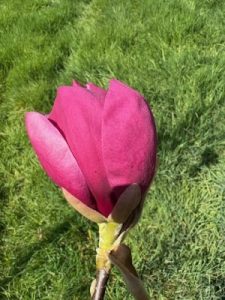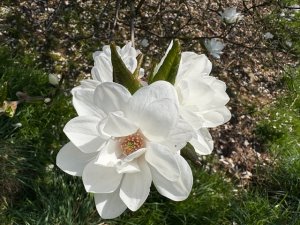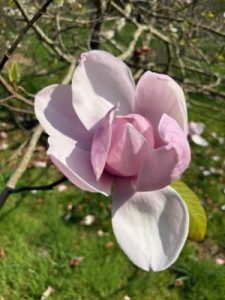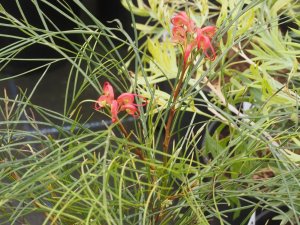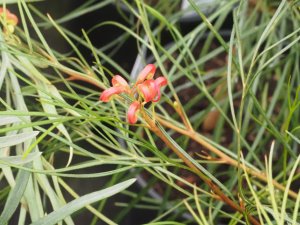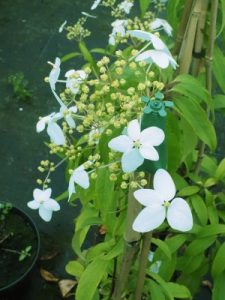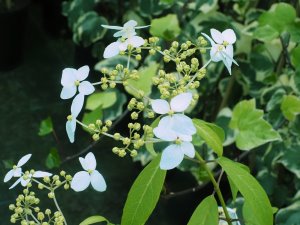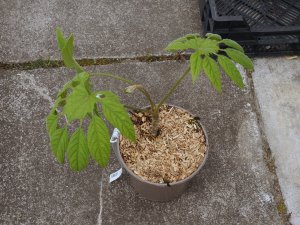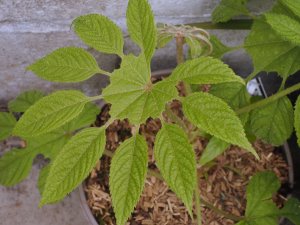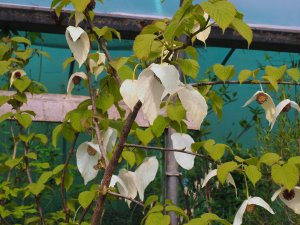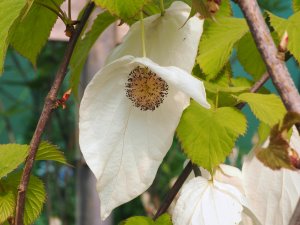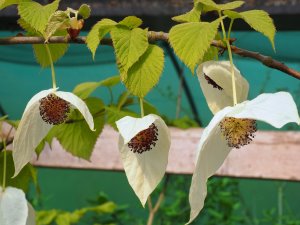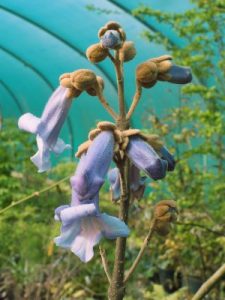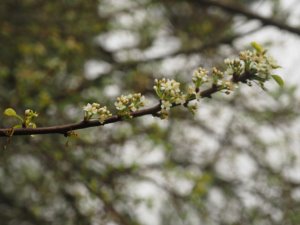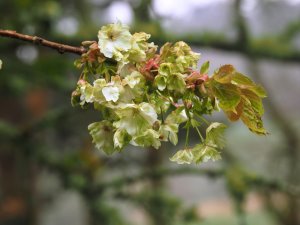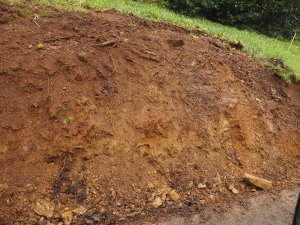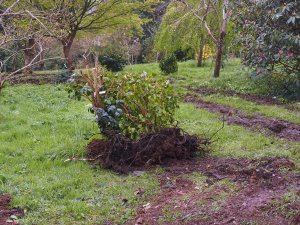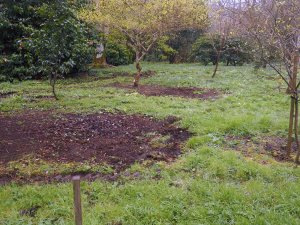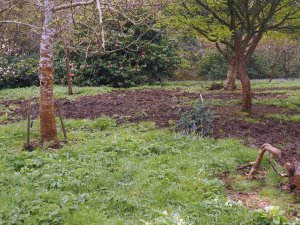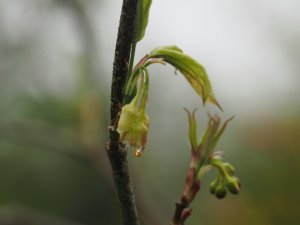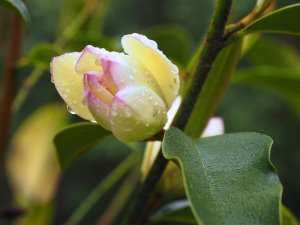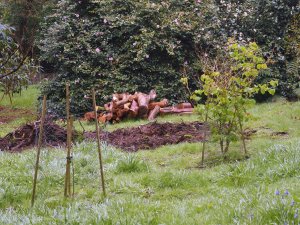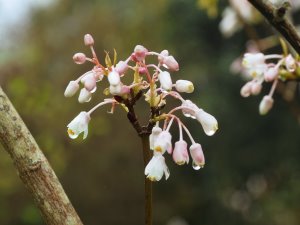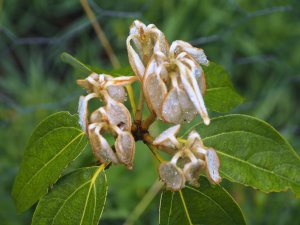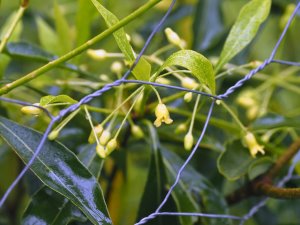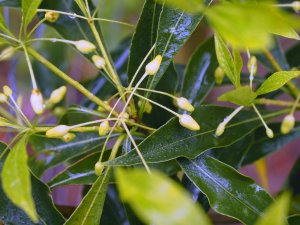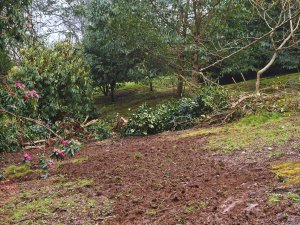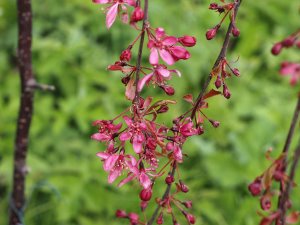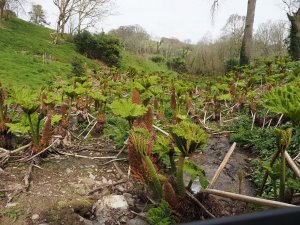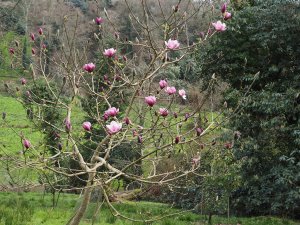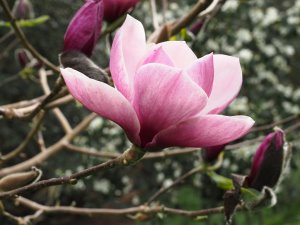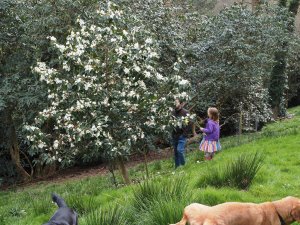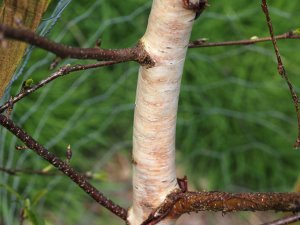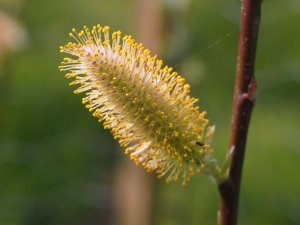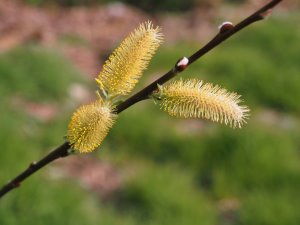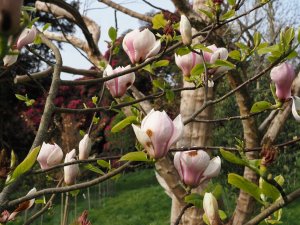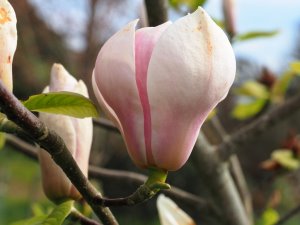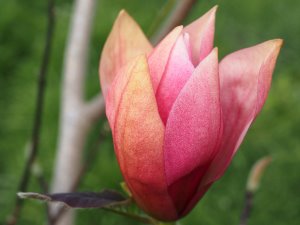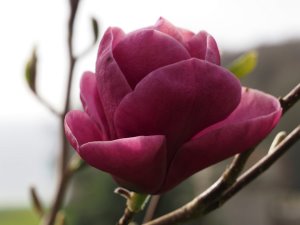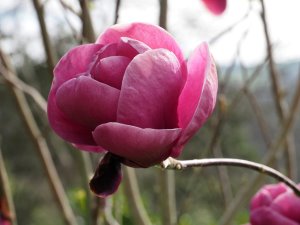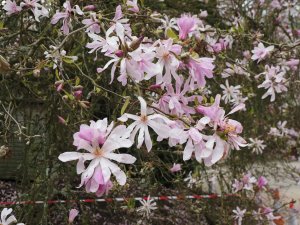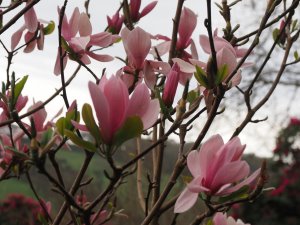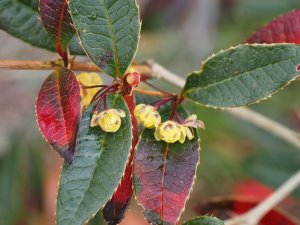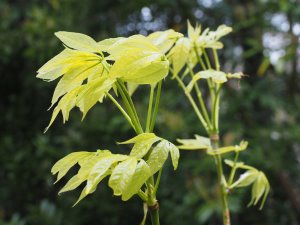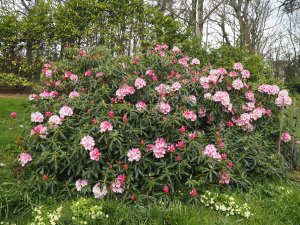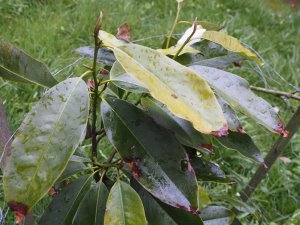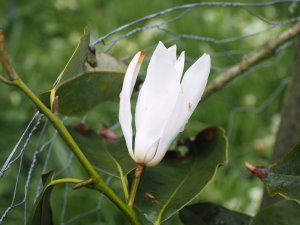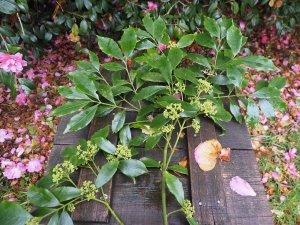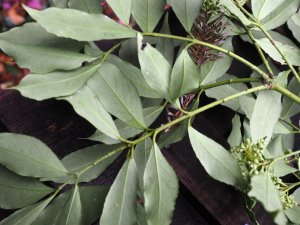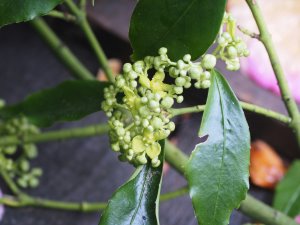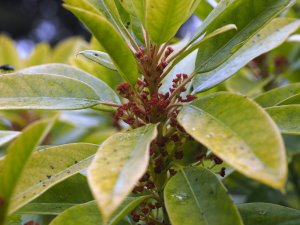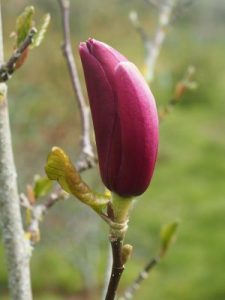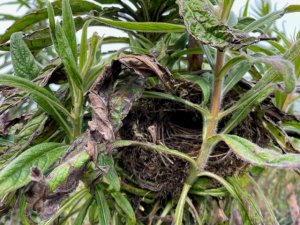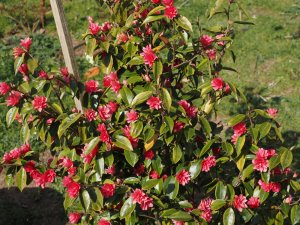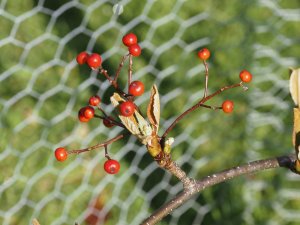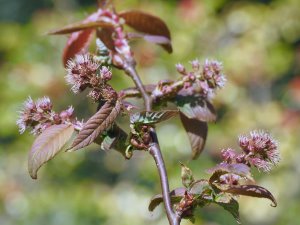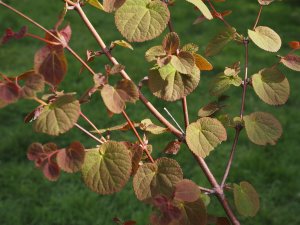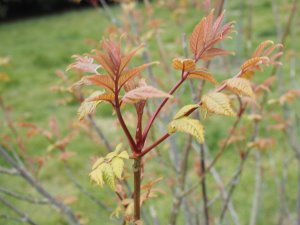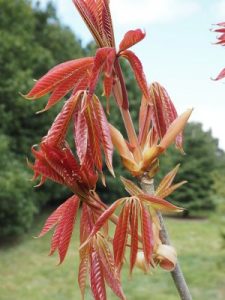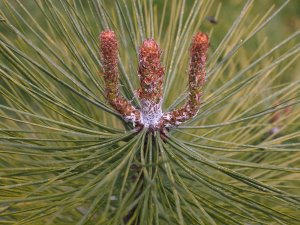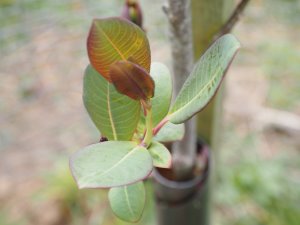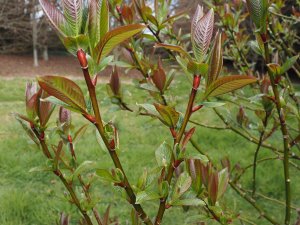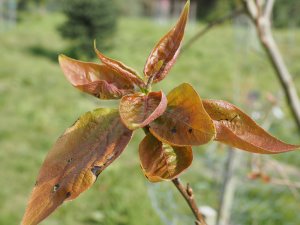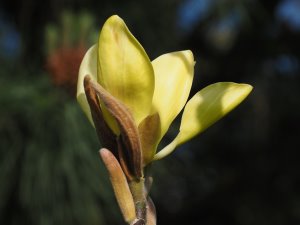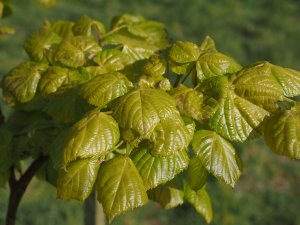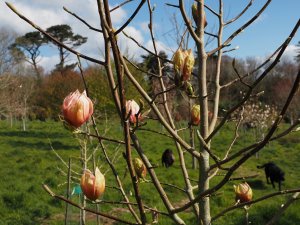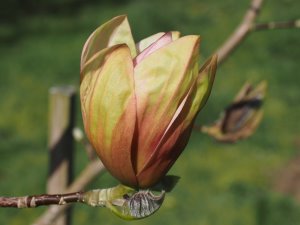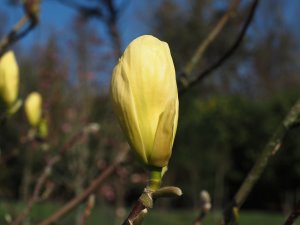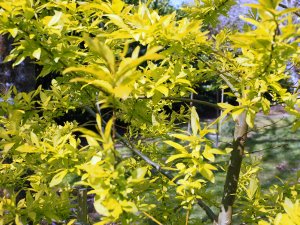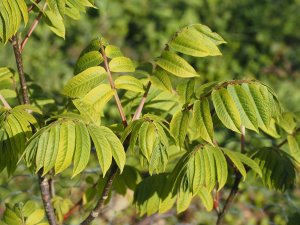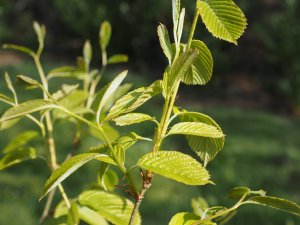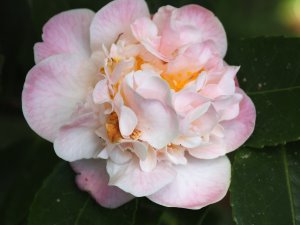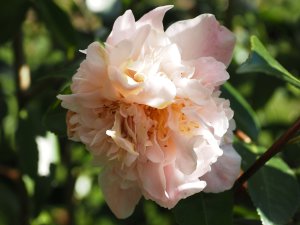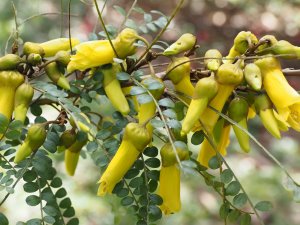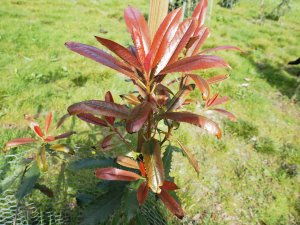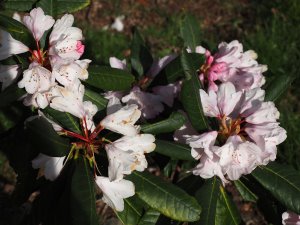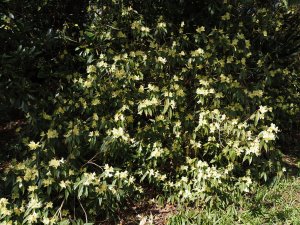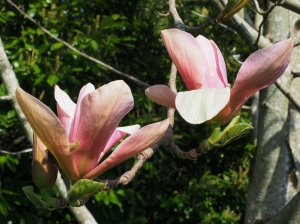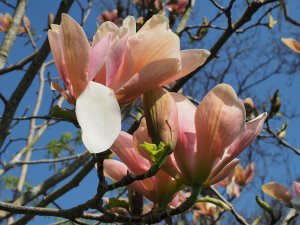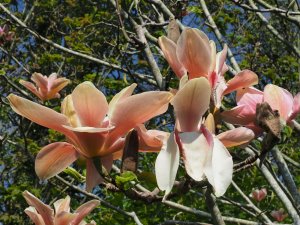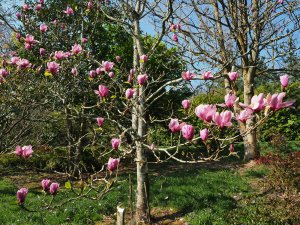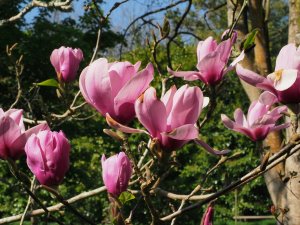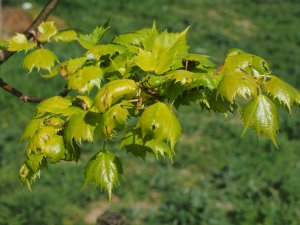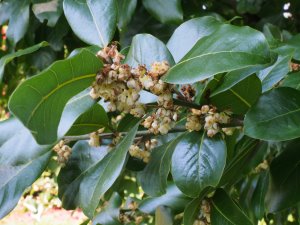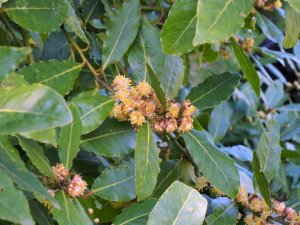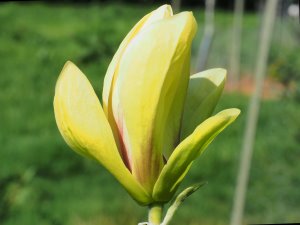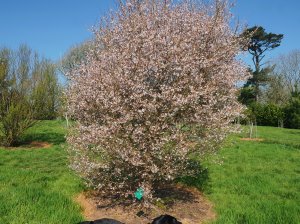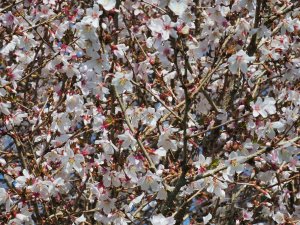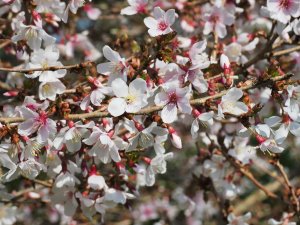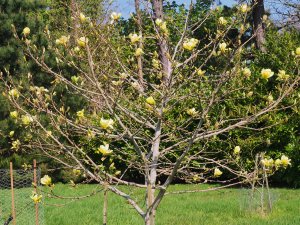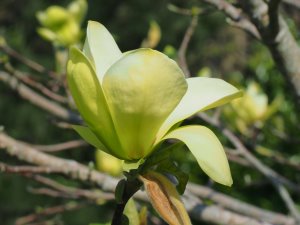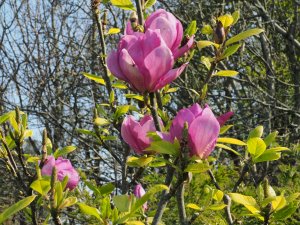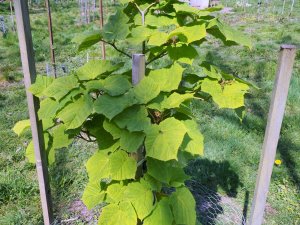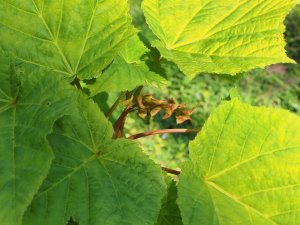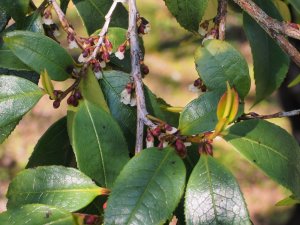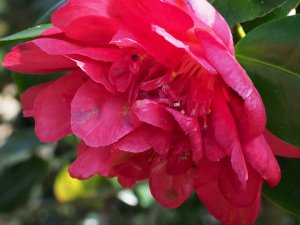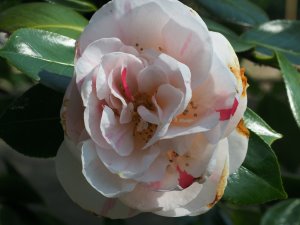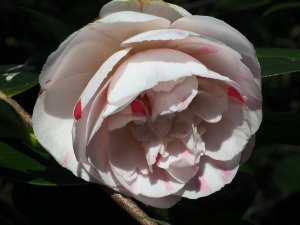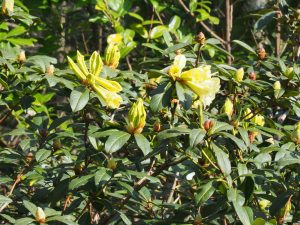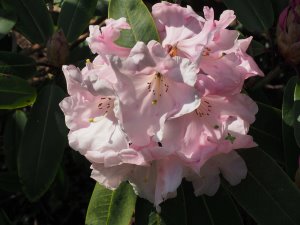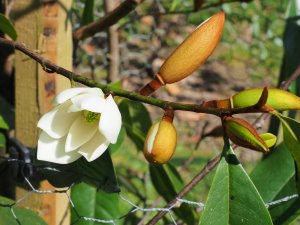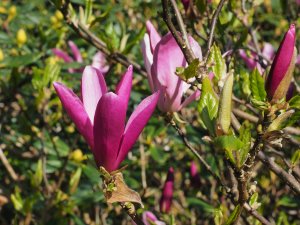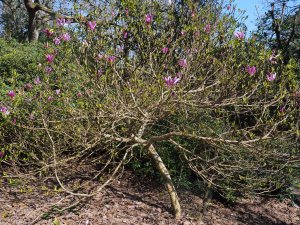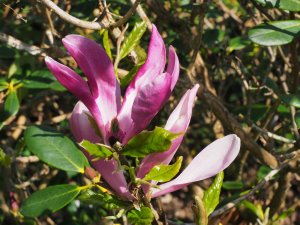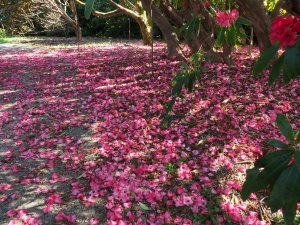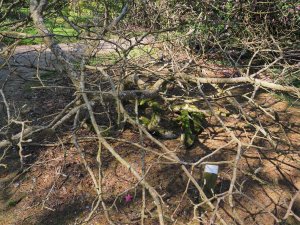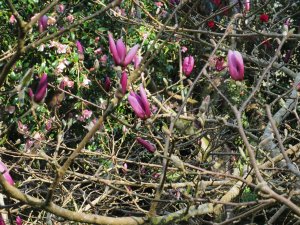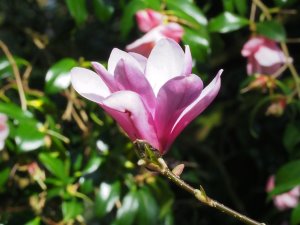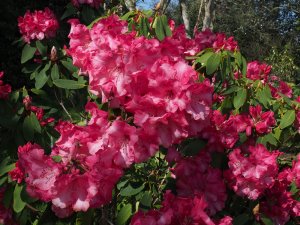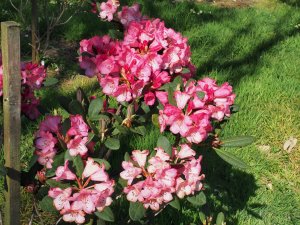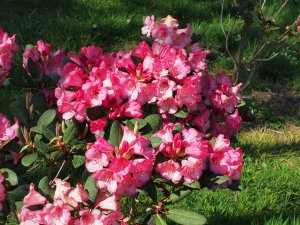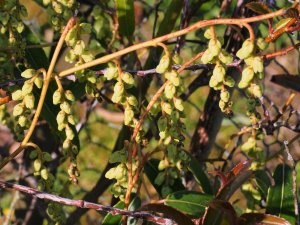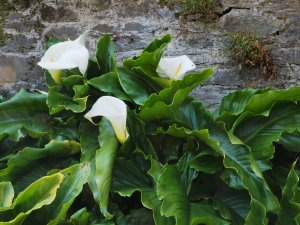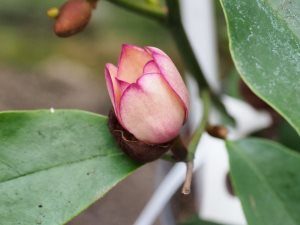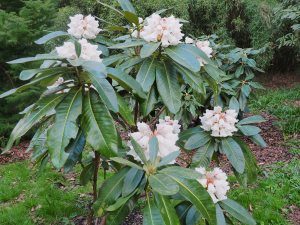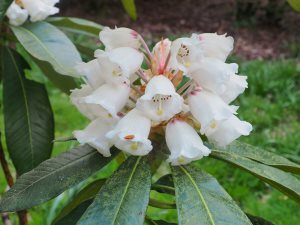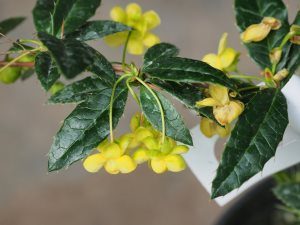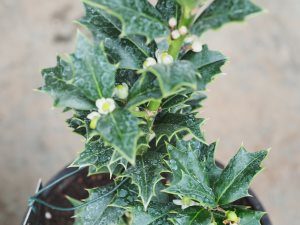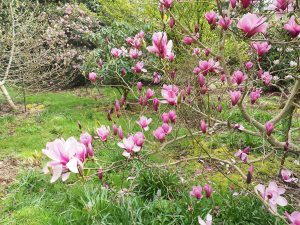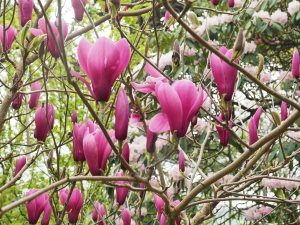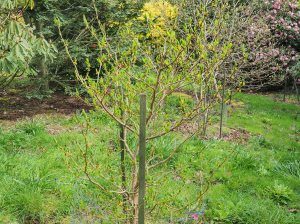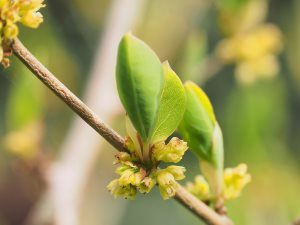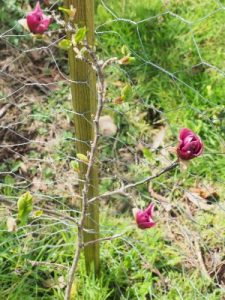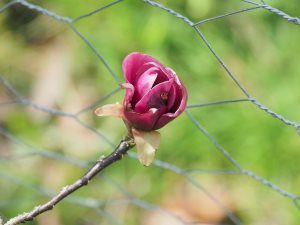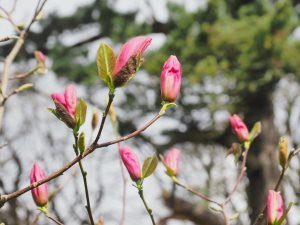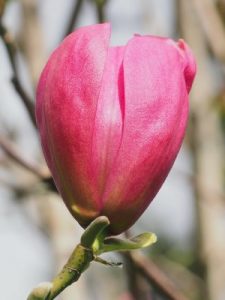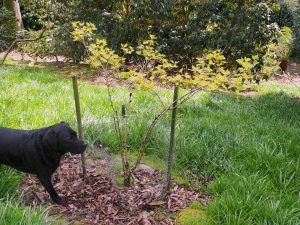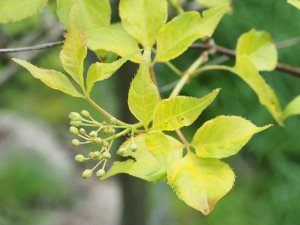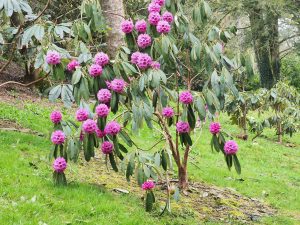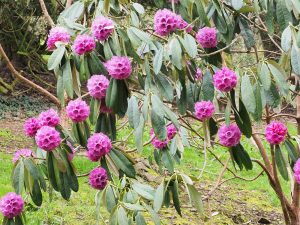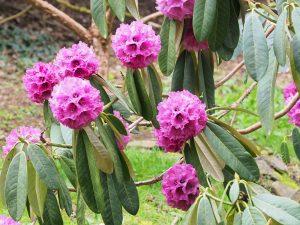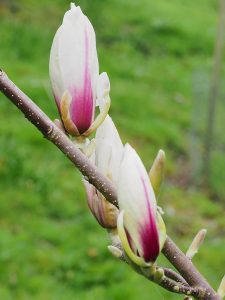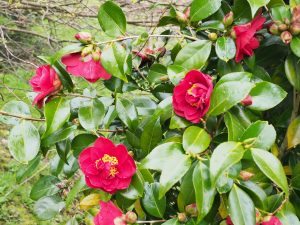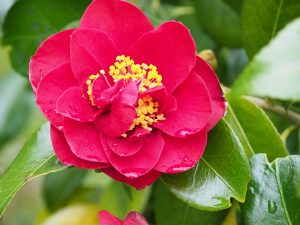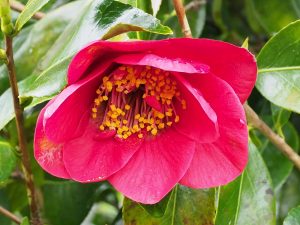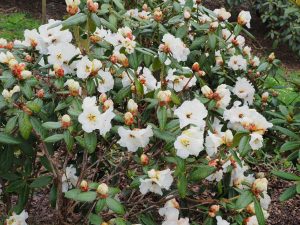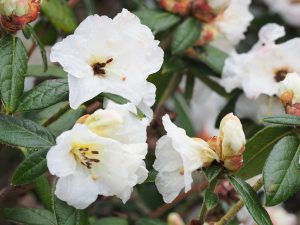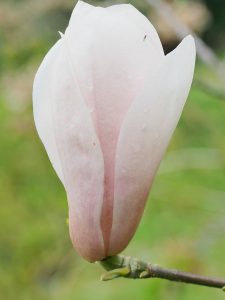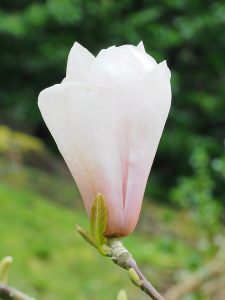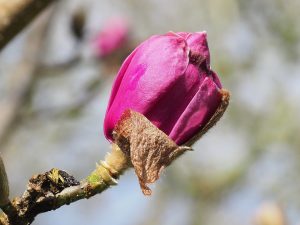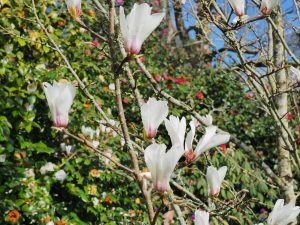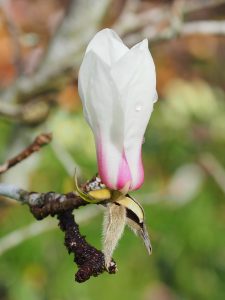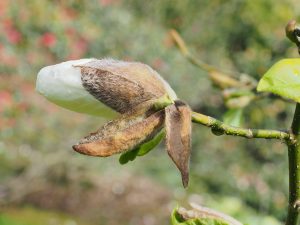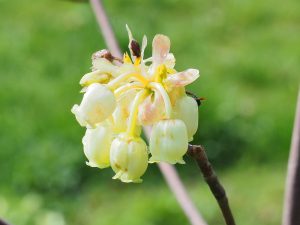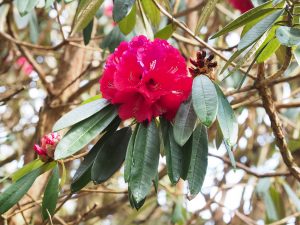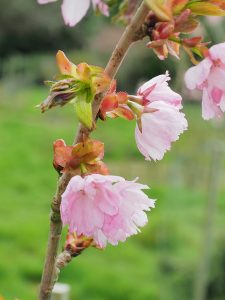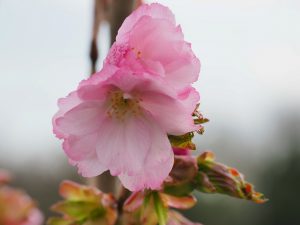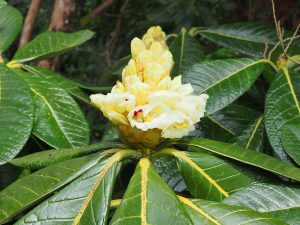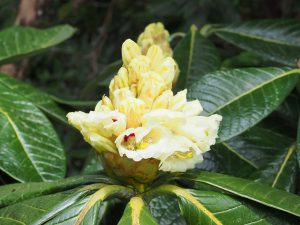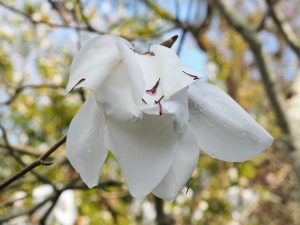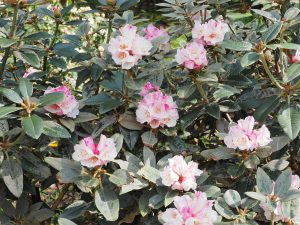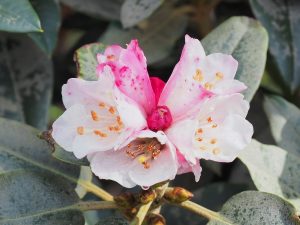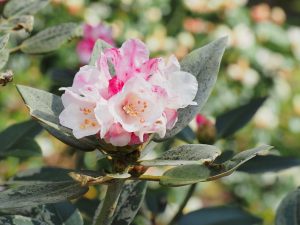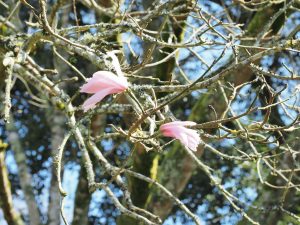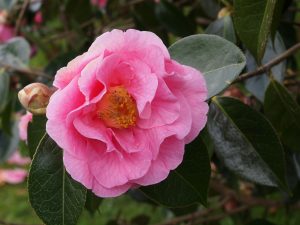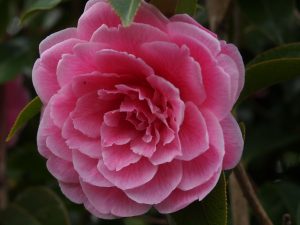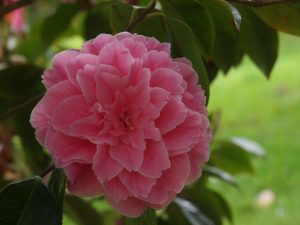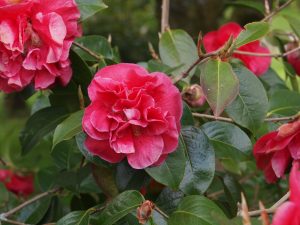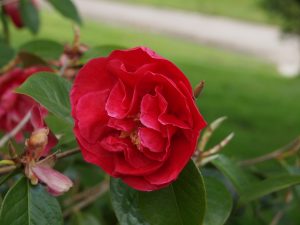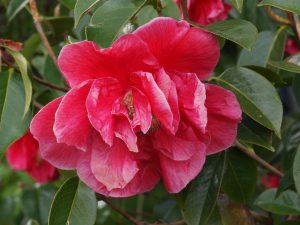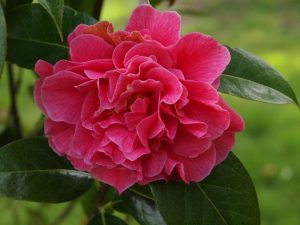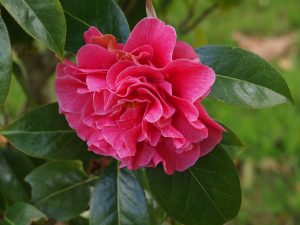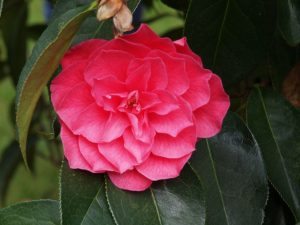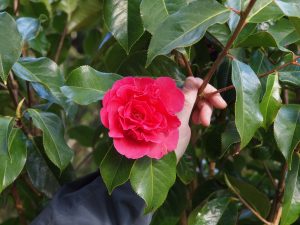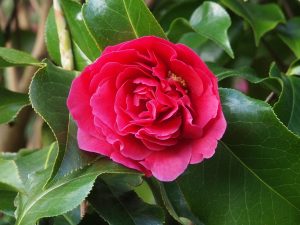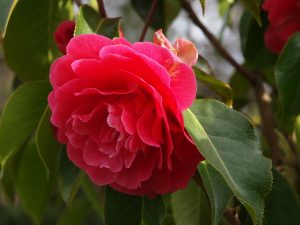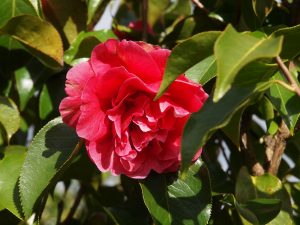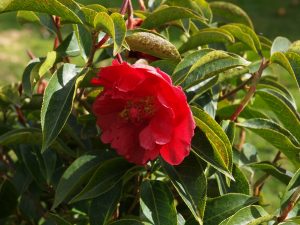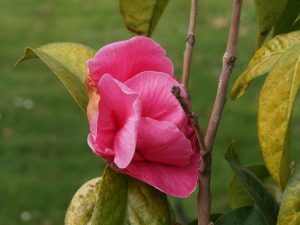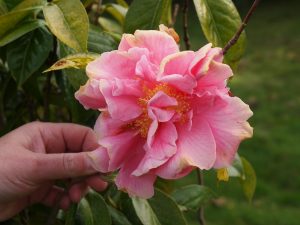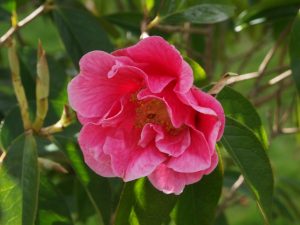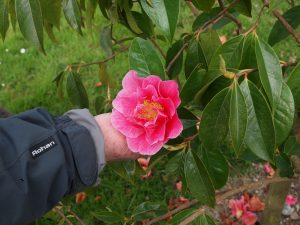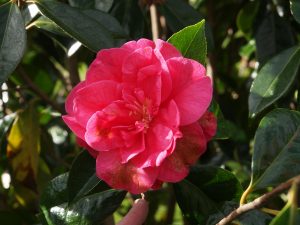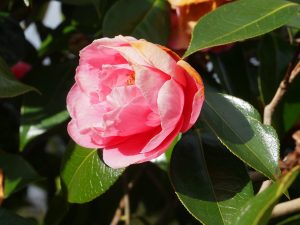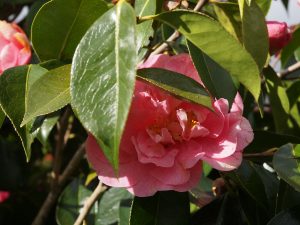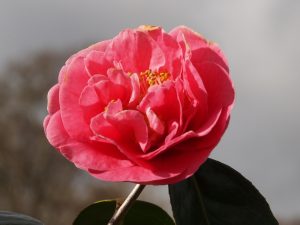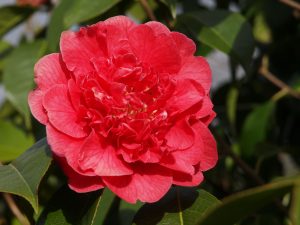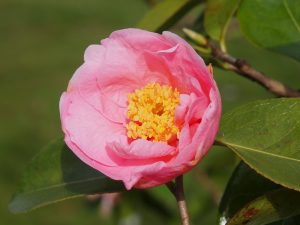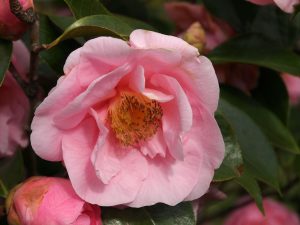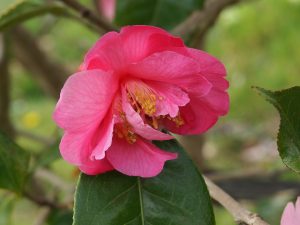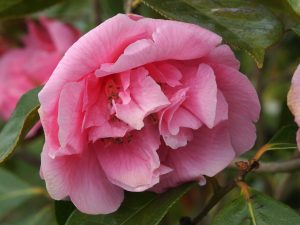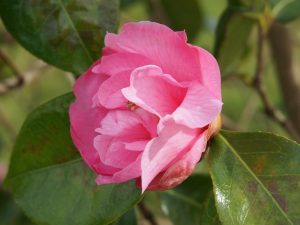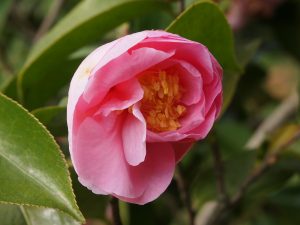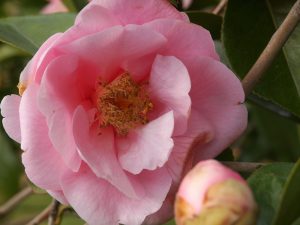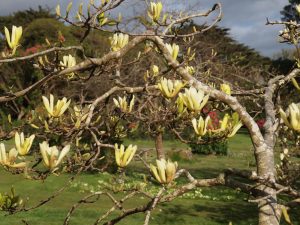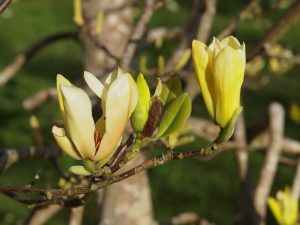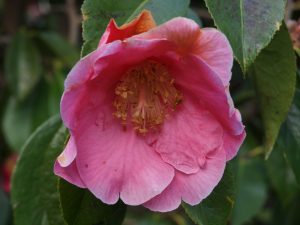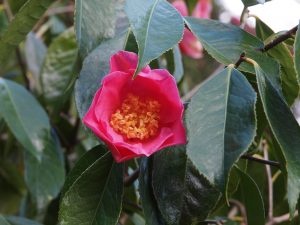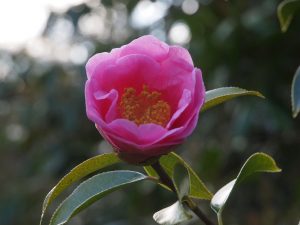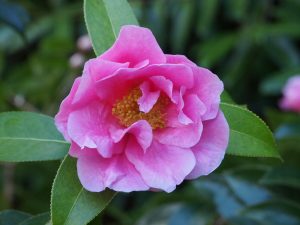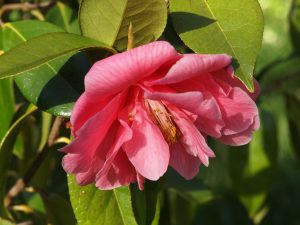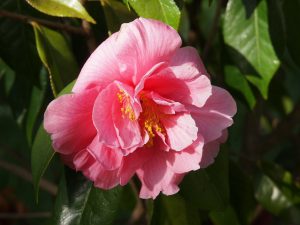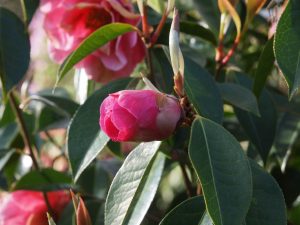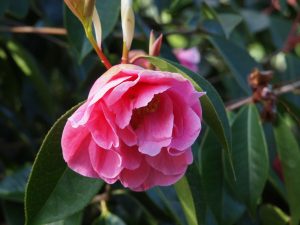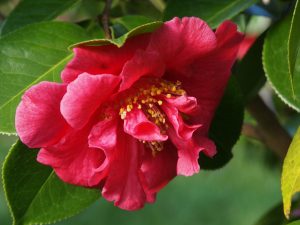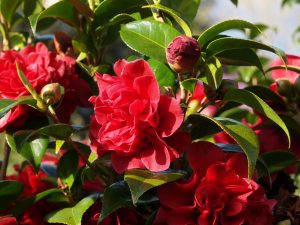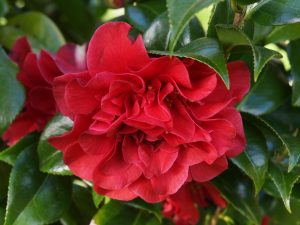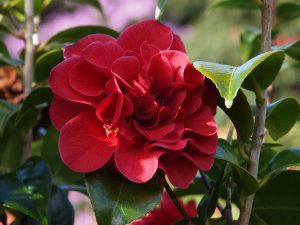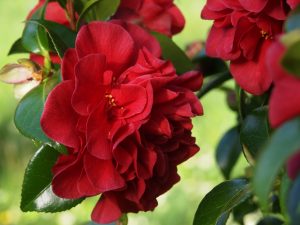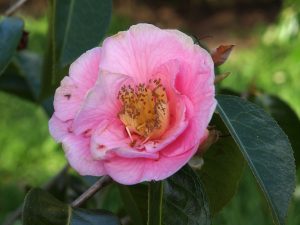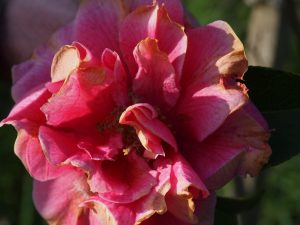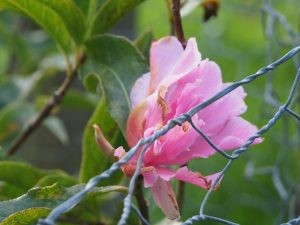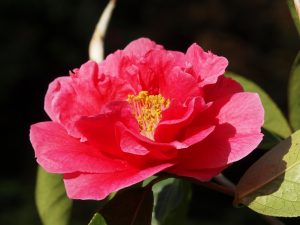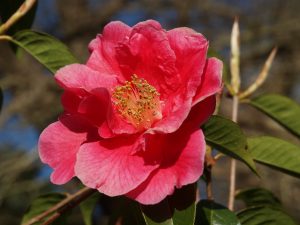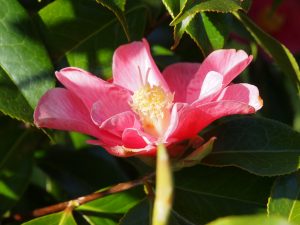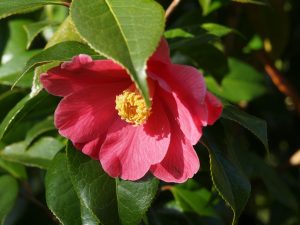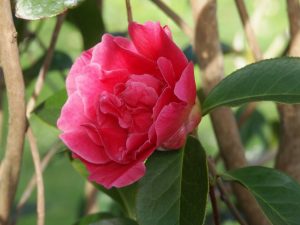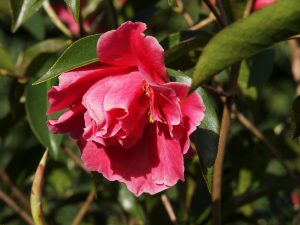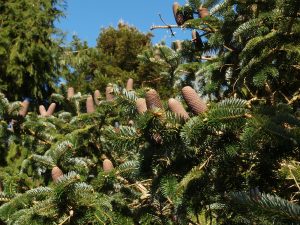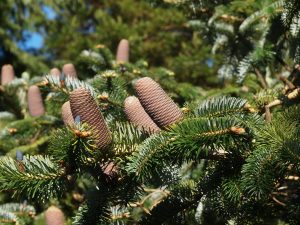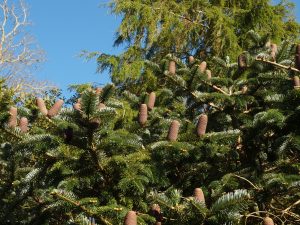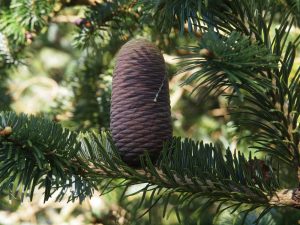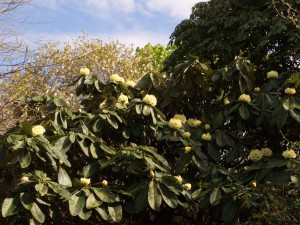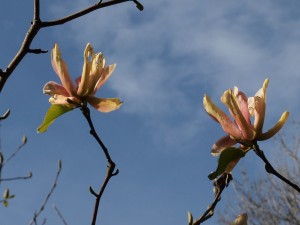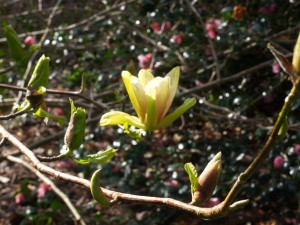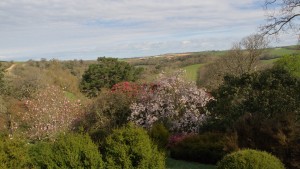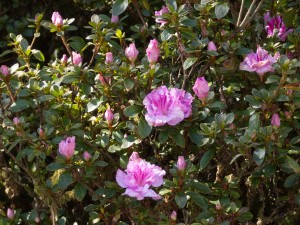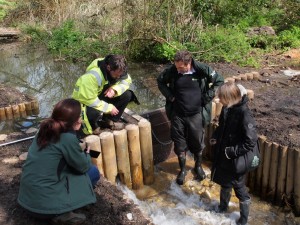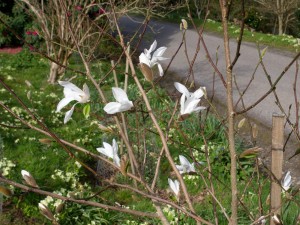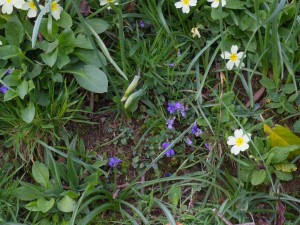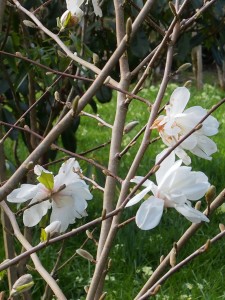2025 – CHW
More new and not so new magnolias from 40 Acre Wood.
Magnolia ‘Anya’ is a NZ cross but very like a darker M. sprengeri var. diva.
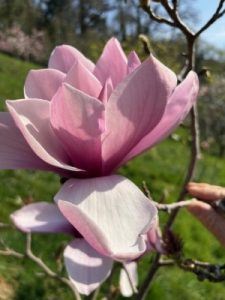
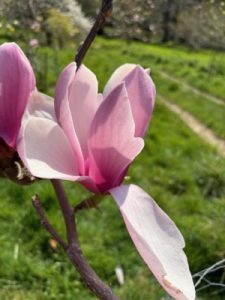
Apparently the weather is finally going to improve.Prunus mahaleb is not a particularly interesting species but the pigeons have been enjoying the opening buds for the last few days.
A tour of Old Park with 2 of the 4 grandchildren; Isla and Bea.Malus ‘Royal Beauty’ – another one out in the Kitchen Garden.
2022 – CHW
The three-phase electric cables awaiting connection outside the back yard.
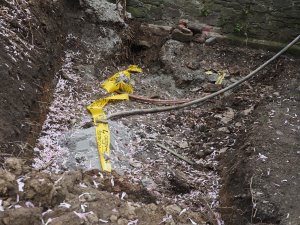
A day to see a few things just coming into first leaf on a sunny day but still near frost overnight.Camellia ‘Fairy Wand’
I have been wondering why attacks are being made on phone masts in some areas and assumed that this was just some conspiracy nutters worried about ‘big brother’ and their movements being traced via their phones. The BBC, who deliver their ‘service’ through transmitter masts as well, have of course rubbished the story.Delving further into this fake news story it would seem that there is more to the story than just ‘nutters’. Where new 5G communication systems have actually been turned on (eg Wuhan, London, Birmingham) the incidence of corona has been at its greatest. A good bit of Chinese technology presumably involved in 5G. I do not pretend to understand this, and it is probably fanciful, however, it is about as unscientific as a good bit of the scientific modelling on the disease from Professor Ferguson (250,000 deaths) for the government. In the public inquiry to follow is it any dafter than suggesting that the death statistics show less smokers are actually catching and dying from COVID-19 than non-smokers? This is the theme this week of Rod Liddle’s article in The Spectator which is hugely entertaining. His statistics try to prove his case, if indeed, his stats are any more reliable or true than anyone else’s when the dust settles. The nutters with their 5G conspiracy theory may not be quite as mad as we would like to assume at present. Orwell again being proved correct as Karol so enjoys telling me from afar.I am told that our local hospitals are only 50% full as they await the onslaught. If they have 20% of their staff at home in isolation (or absent anyway) what are the rest doing as they wait? The reality is not (down here at least) what we are all being led to believe over this glorious Easter weekend of weather.Magnolia ‘Peachy’ full out suddenly.
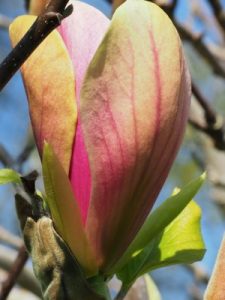
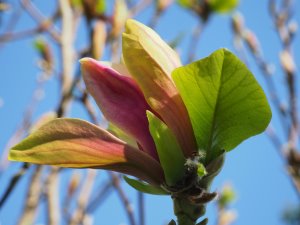
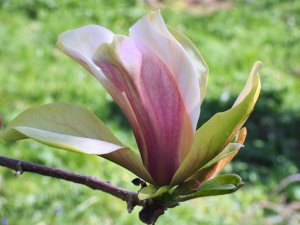
2019 – CHW
Here are some pictures of Jaimie and Michael getting their three cups from the Cornwall Garden Society show for the magnolia displays.
Magnolia (Michelia) laevifolia x M. figo ‘White Caviar’ with its first flower in the greenhouse. It looks more like M. figo to me and I do not really get the ‘White Caviar’ bit but it is certainly attractive. Perhaps it fades to white? We will see in a few days.
A trip along Sinogrande Walk with seven dogs, camera and shotgun in the early evening. Chaos!A very fine Rhododendron niveum in its full glory (two firsts with this at Windsor last weekend when it was an even darker colour). A fairly temperamental and short lived species with us which died out originally at Donkey Show corner when I was a kid. We now have a few half decent 20 year old plants dotted about but have lost plenty more to wind and excessive wet which this species seems to heartily dislike. Perhaps such a superb (or nauseous?) colour makes it a ‘delicate’ subject? The colour of this plant is far better than others we have or the original I remember. My mother adored the colour; Dad less so when she threatened to get wallpaper made in this sort of hue!
2017 – CHW
A trip to Tregothnan in the evening to quietly look at their Camellia reticulata collection on my own with Evelyn. For a long time I have wanted to assess all the varieties against the much older Kunming camellias here. The main source of ‘new’ reticulata varieties in the collection was Nuccio Nurseries in the US although Tregothnan grafted most of them themselves before the first phase of planting out in 2003. The second batch of plants came from Stervinou Nurseries in France in 2007. No camellias (or even cuttings) can any longer be imported from the US due to phytosanitary restrictions so the Nuccio reticulata collection is impossible to access now. The French only have a much more limited range of varieties.
Camellia reticulatas, especially grafted plants, are notoriously difficult to grow, tend to be prone to viral infections, and are difficult to keep growing upright without branches flopping down from the weight of their flowers. Deer particularly like reticulatas too. So the Tregothnan reticulata collection has been a struggle but also now a triumph of achievement. Out of the 40 to 50 varieties about 10 had finished flowering and many of the rest were well past their best. However many varieties were entirely new to me and, as expected, several varieties have flowers which are both singles and double on the same bush.
The majority of the 2003 planting are growing now in full sun in the open and quite exposed to wind. The 2007 planting is more sheltered with dappled shade and the foliage is far better for this. One wonders how many other varieties have become casualties along the way.
Camellia reticulata ‘Lasca Beauty’ is quite well known.
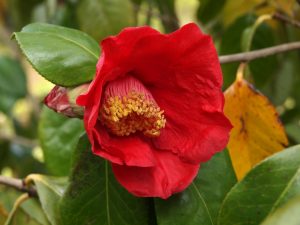
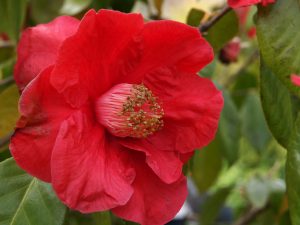

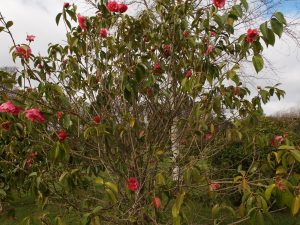
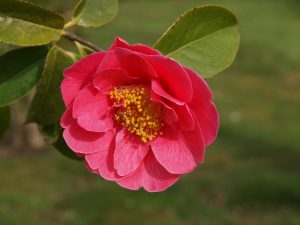
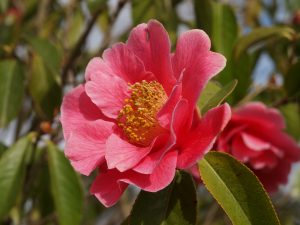
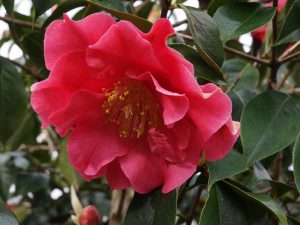

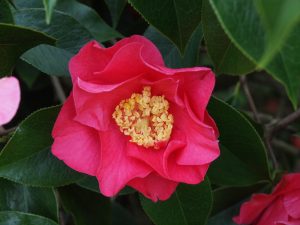
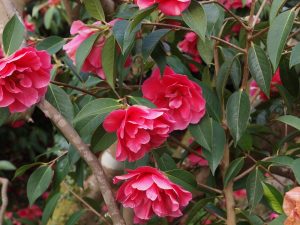
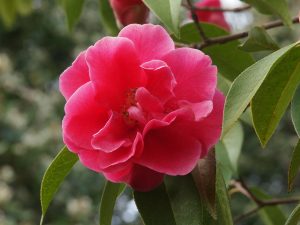
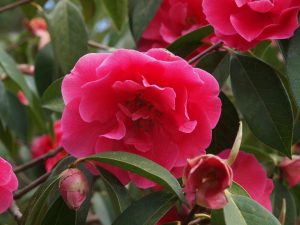
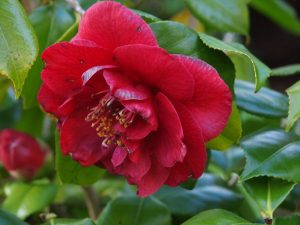
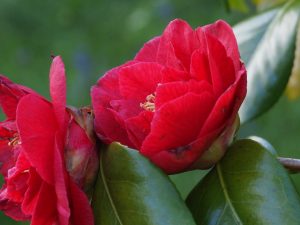
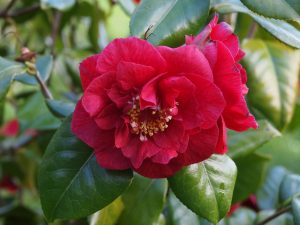
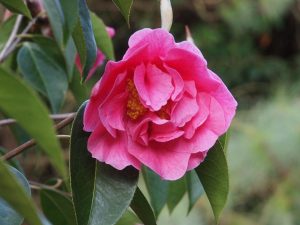
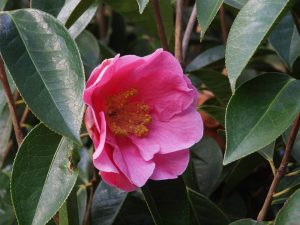
I did not bother to photograph the pure white reticulata which is now here or the elderly ‘Frankie L’ which splits out as ours did from the way it grows and the weight of the flowers.‘Butterfly Wings’ stood out today as the ‘must have’ reticulata variety of the 35 individually photographed. I need to get to these earlier next year.
Meeting with Philip Brown to organise the tree planting here in late June by The Worshipful Company of Fruiterers in acknowledgment of the Historic Houses Association Garden of the Year. Sounds like another good lunch for the members of this city livery company!On the tour the best Rhododendron macabeanum is just coming out.
Chaenomeles speciosa ‘Geisha Girl’ is just coming into flower by the tower.
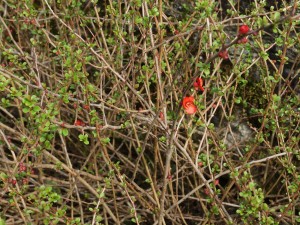
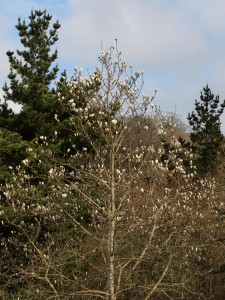
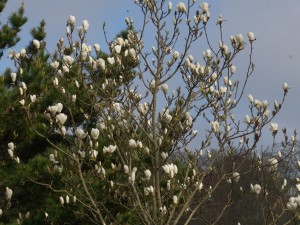
2015 – CHW
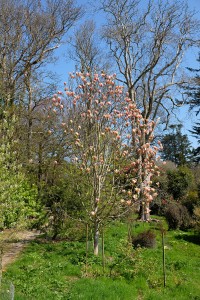
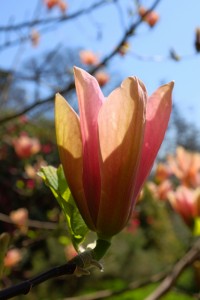
Magnolia ‘Peachy’ is now out by Tin Garden. This is apparently from the same seedpan or a similar cross to our Fertile Myrtle x sprengeri ‘Diva’. ‘Peachy’ is slightly less horrible with more of a hint of peach as it first comes out rather than the more vulgar stripes on our as yet unnamed (?) ‘Fruit Salad’. The third seedling from this batch is ‘Flamingo’ [get from Jaimie] which is somewhat different again. This is not yet a plant which we grow.
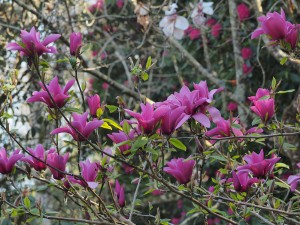
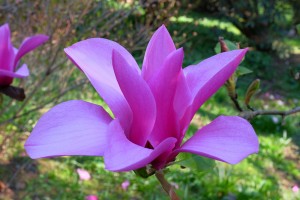
Magnolia ‘Margaret Helen’ is finally out on the drive. A New Zealand cross very similar to ‘Caerhays Surprise’. BlueBell Nursery say that Margaret Helen is the best second flowerer of any magnolia with them in September/October. We have never seen a second flowering on Caerhays Surprise which implies that Margaret Helen has some Magnolia soulangeana in its parentage which Caerhays Surprise certainly does not.
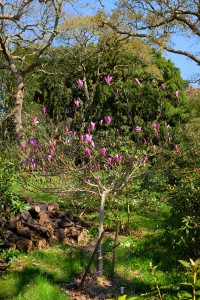
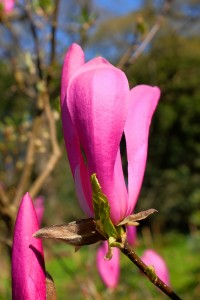
Magnolia ‘Randy’ is showing colour. This is one of ‘the girls’ crosses between Magnolia liliiflora ‘Nigra’ and Magnolia stellata ‘Rosea’. I first saw these 35 years ago working in the Valley Gardens at Windsor. Despite attaching wires to the root ball to deter theft ‘Randy’ was always the first to be pinched. The plant is rather dark in bud but it is supposed to be a light pink later so possibly a naming cockup here. It may in fact be ‘Ricki’. Time will tell. Good to see that the new Hillier’s now lists only the best eight of ‘the girls’ and not the full dozen or more which always caused confusion (Susan, Pinkie, Jane, Ann, Judy and Betty). Frankly the list could be cut further but then these are ideal plants for smaller gardens or tub growing. ‘Susan’ performs best here.
2003 – FJW
Might soon call this Sunday ‘Primrose Day’.
1998 – FJW
Snow on Easter Sunday. No swallows seen. Cold and floods up country. Camellias A+.
1996 – FJW
Swallows active. First good soak for some weeks. New Mag on Drive [J C Williams] excellent. Very late season. Daffs at their best. Excellent year for Camellias.
1979 – FJW
First swallows seen. (D.J.W.). T H Jobson died Maunday Thursday.
1969 – FJW
Swallows seen for first time.
1963 – FJW
Magnolias at their best.
1955 – CW
Went to Beech Walk extremely early. V. G Irroratum 200 yards beyond but Camellia japonica very few flowers. No sign of life at Trevennen – Mrs Butlers some at best. No buds on young magnolias. Big Robusta one at Donkey Shoe V.G. Saw Julians unknown plant above crino hedge, ‘he thought a Mag perhaps’, only a Reticulata with leaves blown off. Not very deep knowledge at his age.
1931 – JCW
Magnolia sargentiana opened its first flowers, very large purplish pink flowers, quite a fine tree. The daffs have reached Poet Arums and De Graaf opening, and it has been a very good season indeed.
1930 – JCW
Some Calophytums open but not all, a bad flowering year for them. The early Kobus – soulangeana – conspicua one plant. Salicifolia shows colour. Denudata nearly all out. Madame de Graaf is open in the Drive and poets are near opening.Several Prunus incisa V.G.
1929 – JCW
Magnolia denudata has been most remarkable but is on the wane. Bean put the best Kobus down as having two thousand blooms open. The swallows at the house today. The big pink Calophytum is at its best. The neriflorums are very good. Rho praecox is over but was excellent. The nursery wall stellata is in full flower.
1928 – JCW
Cernus rubens is at half length in the Donkey Show, Augustinii nears its best. Campylocarpum x auklandii is very nice. Neriflorums are very good. Auklandii buds far on. Mag halleana is fully out. Mag alba ‘Superba’ and speciosa both open.
1917 – JCW
P D saw the first martins.
1910 – JCW
Show day. De Graaf and Auklandii open, some poets there, a good show but flowers were short of moisture, rain came in the evening. Swallows came 3 days ago, the pendulous cherry most lovely, the others opening.
1909 – JCW
Swallows at the pond. A late season. C reticulata a few open, no de Graaf, similar to 1900. Shilsonii very good and so the Argenteums, probably the best things we have out.
1898 – JCW
Bob saw the first swallow.




